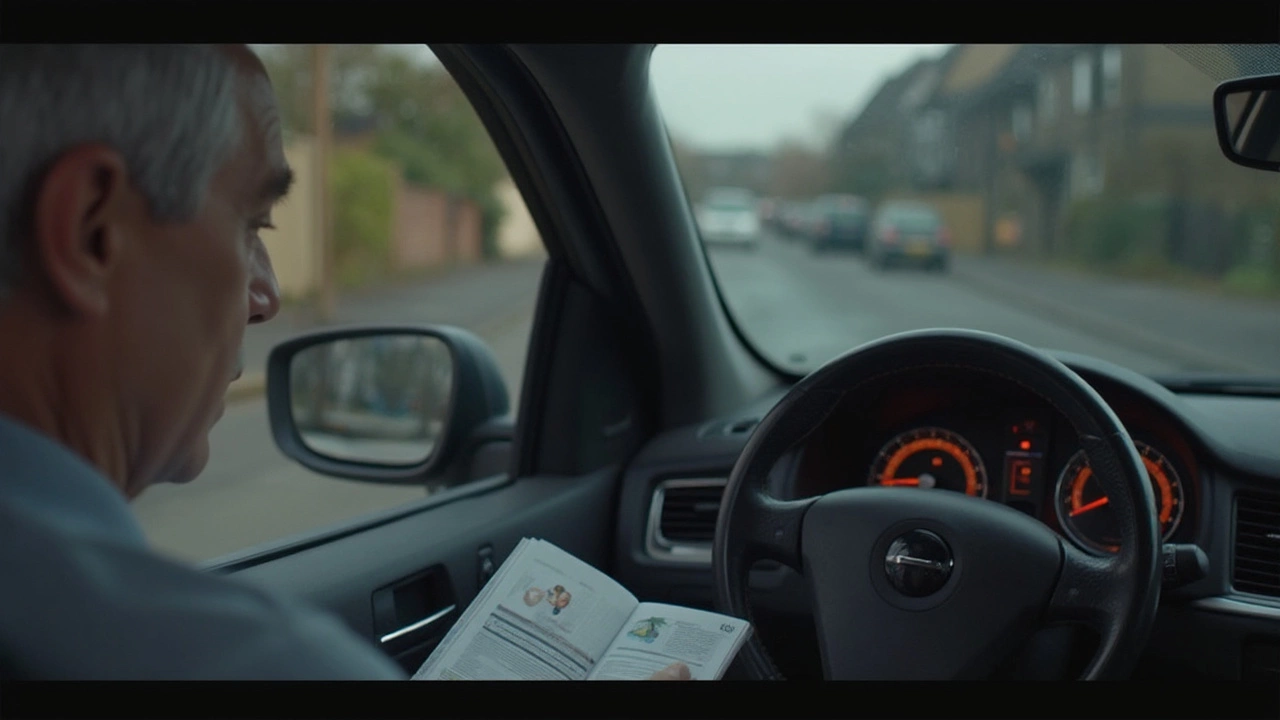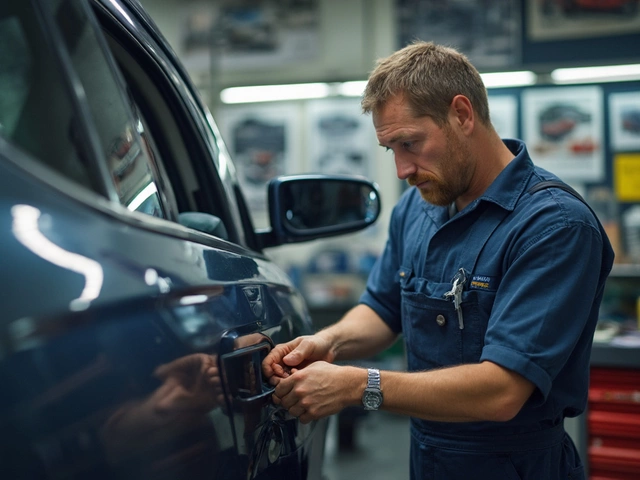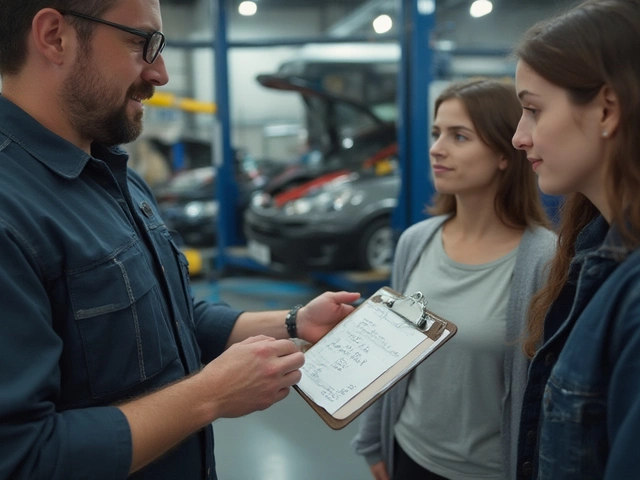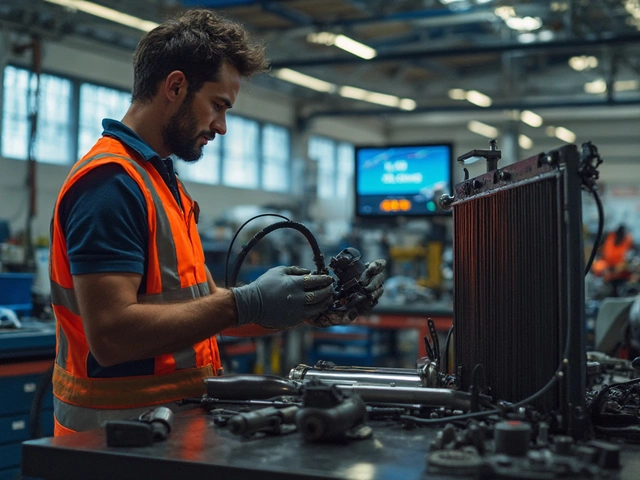Think your car's brakes will last forever? Wishful thinking. Brake pads are one of those parts that take a beating every time you drive. When they wear out, it doesn’t just hurt your wallet—it can mess with your safety, your car, and even cost you a lot more in repairs down the line.
So, is it really worth replacing them, or can you put it off? Here’s the thing: driving on worn-out brake pads is like playing with fire. Most cars need new pads every 30,000 to 70,000 miles, but factors like city traffic, hilly roads, and heavy braking can wear them out way faster. If you’re hearing squeaks, grinding, or your brake pedal feels soft, don’t ignore it. Those are your car’s not-so-subtle hints that it’s time for a change.
- What Happens When Brake Pads Wear Out?
- How to Tell Your Brake Pads Need Replacing
- The Cost of Waiting Too Long
- Tips for Replacing Brake Pads Smartly
What Happens When Brake Pads Wear Out?
This isn’t something you want to ignore. When your brake pads wear out, you’re not just risking a squeaky annoyance. Things can get dangerous fast.
Here’s what actually goes down. The friction material on the pads gets thinner with every stop. Once it’s gone, you’re left with metal scraping on metal. Not only does that sound awful, but it also kills your brakes. Metal-on-metal grinding badly damages your rotors, turning what could’ve been a simple brake pad replacement into a full-blown, pricey repair.
Let’s break down what you might notice when your pads are worn:
- Squeaky or squealing sounds: Most pads have a built-in indicator that screeches when it’s time to swap them out.
- Grinding noises: That’s the sound of damage—literally metal biting into the rotors.
- Longer stopping distance: Worn pads can’t grip the brakes as well, so your car takes longer to stop.
- Vibration in the pedal: Uneven wear or rotor damage means your stops get shaky and less safe.
- Warning light: Some cars have a dash light to let you know there’s trouble with your brake pads.
A 2023 auto repair study found that about 27% of brake repairs involved rotor replacement because the driver ignored the first signs of worn pads. That’s a chunk of cash that could’ve been saved by catching it earlier.
In the end, old brake pads aren’t just noisy—they put your safety, wallet, and car at serious risk if you brush them off.
How to Tell Your Brake Pads Need Replacing
Let’s get real—brake pad replacement isn’t just a “someday” kind of thing. Your car throws out warning signs way before things go south. If you know what to look for, you’ll save money and avoid weird noises that turn heads for all the wrong reasons.
First up, trust your ears. A soft squeal (that comes and goes) means your brake pads have built-in wear indicators. These are little metal tabs designed to squeak when pads get thin. Hear a deeper grinding sound? That’s the sound of metal-on-metal, and it’s as bad as it gets—your rotors might already be taking damage. Don’t wait if this happens.
Pay attention to how your brake pedal feels. If it feels squishy, harder to push, or takes longer to stop, the pads are likely worn out. Sometimes, you get lucky with a dashboard brake warning light—that’s a dead giveaway (but not all cars have this feature).
You can also eyeball the pads if your wheel spokes allow. If the brake pad lining looks less than a quarter inch thick (about the width of two stacked quarters), it's time to consider new ones.
- Squeaking or squealing when stopping
- Grinding or scraping noises
- Brake pedal feels soft or spongy
- Car pulls to one side when braking
- Brake warning light stays on
- Visible pad thickness under 1/4 inch
Curious how fast this happens? Here’s a handy look at average brake pad lifespan by driving style:
| Driving Style | Average Pad Life (Miles) |
|---|---|
| Mainly highway | 70,000+ |
| Stop-and-go city | 30,000 – 40,000 |
| Heavy braking/hilly | 20,000 – 30,000 |
Don’t shrug off the early signs. Catching these symptoms early makes brake pad replacement way easier on your wallet, not to mention safe for everyone on the road.

The Cost of Waiting Too Long
Holding off on replacing your brake pads might seem like a way to save money, but it usually turns out to be way more expensive—and risky—than just getting the job done on time. When pads wear down to the metal, they start grinding against your rotors. That means you’re not just paying for new pads. Now you’re forking out for new rotors (and maybe even calipers), plus extra labor. Rotors can cost up to $400 per axle with parts and labor at the shop, while pads alone are usually around $150 per axle.
Let’s look at what happens if you ignore those warning signs:
- Serious safety risk: Worn-out pads take longer to stop the car. In a panic stop, that could mean the difference between a close call and a wreck.
- Damage spreads fast: Bad pads chew up rotors and can even damage the calipers. Suddenly, a $150 fix turns into a $600 repair bill.
- Failed inspections: Most states won’t pass your car for inspection if the brakes aren’t up to par. That means legal trouble and wasted time.
- Lower resale value: If your brakes are shot when you try to sell or trade in, expect a much lower offer from the dealer or buyer.
And just to put the numbers in perspective, here’s how costs can add up fast if you wait too long:
| Repair | Average Cost (Per Axle) |
|---|---|
| Brake Pad Replacement | $100 - $200 |
| Pad & Rotor Replacement | $300 - $600 |
| Pad, Rotor & Caliper Replacement | $600 - $900 |
It’s not just about money, either. Ignoring brake pad replacement puts you, your passengers, and everyone else on the road at risk. If you’re hearing grinding or your brakes feel weak, don’t wait—get them checked out before a minor fix snowballs into a major headache.
Tips for Replacing Brake Pads Smartly
Swapping out brake pads doesn’t have to be a pain, but it does pay to do it right. Let’s cut the confusion with some practical tips so you save money, stay safe, and skip the common headaches.
- Don’t wait until you hear grinding. By the time your brakes sound like a coffee grinder, you could already be damaging your rotors. That’ll hike up your repair bill way more than just pads.
- Check your owner’s manual before anything. Manufacturers often give you a recommended mileage range for brake pad replacement. Some even have wear sensors that’ll trip a dashboard alert.
- Use good quality pads. Cheap ones wear faster, can squeak or even crumble apart. You don’t have to go for the most expensive, but avoid the bottom-shelf stuff at big box stores.
- Get both sides done at the same time. Changing just one side will give you uneven stopping power and could make your car pull to one side when braking.
- Ask your mechanic if your rotors need resurfacing or replacing. Slapping new pads on warped rotors is just asking for trouble—and you’ll be back in the shop way sooner.
- If you’re comfortable with DIY, swapping brake pads isn’t rocket science with the right tools. But if you’re not sure, don’t risk your safety. A pro job is sometimes worth the peace of mind.
| Type | Parts Only | Parts & Labor |
|---|---|---|
| Standard Car | $50 - $120 | $150 - $300 |
| SUV/Truck | $70 - $200 | $200 - $400 |
Want your new pads to last as long as possible? Go easy on the brakes. Tailgating and constant hard stops burn through pads fast. Give yourself room to slow down naturally and you’ll be surprised how you can stretch out the life of your brakes and maybe save a few bucks down the road.






